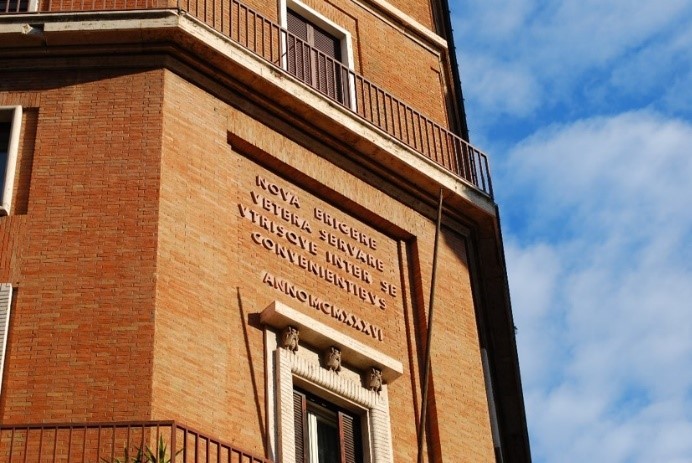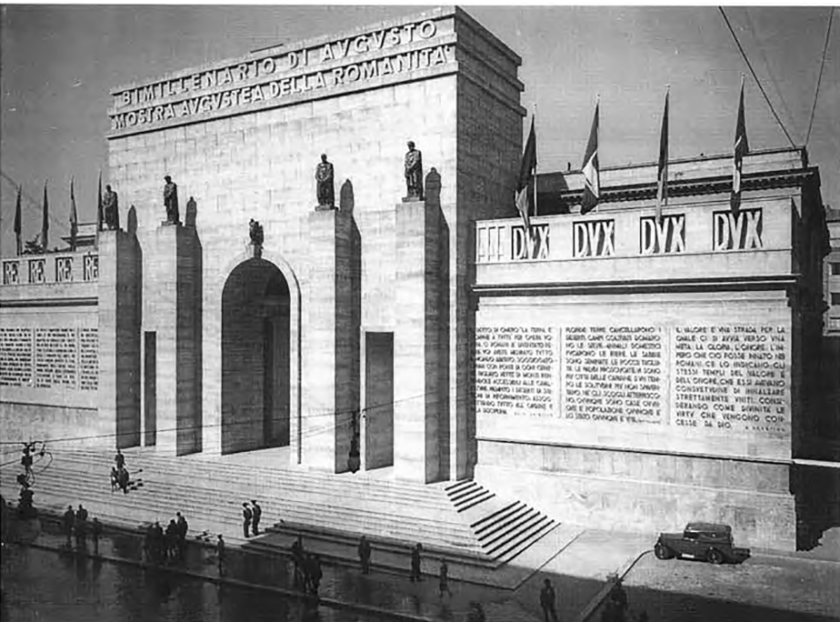The appropriation of ancient Greece and Rome by far-right ideologies has been troubling scholars of antiquity for quite some time now. From German National-Socialism to contemporary alt-right movements, many groups have been using Greek and Roman antiquity as an anchor for their political and cultural agenda. But few have turned as systematically to antiquity as the Italian Fascist regime did.
If you were walking through Rome’s historical centre, you might make a stop at one of the city’s most iconic roads: Via dei Fori Imperiali, the long avenue that links the Colosseum to Piazza Venezia running through ancient Rome’s ruins. If you considered when and why the avenue was originally inaugurated – in 1932, as a celebration of the ten-year anniversary of the Fascist regime’s rule over Italy – you might then realize that your gaze on ancient Rome’s urban fabric is still heavily conditioned by the Fascists’ interventions on that very fabric. Walking across the city, you might also stumble upon Latin inscriptions such as the one below: it was completed under Fascism, in 1936, and celebrates the creation of new realities and the preservation of traditions – in other words, the legacy of Rome.

Ever since the seizure of power in 1922, the Fascist regime claimed a special relationship with ancient Rome. It presented itself as the heir and renovator of the Roman empire, and used all possible means to construct a sense of continuity between Fascist Italy and Rome’s ancient past – by creating Roman-like buildings, by implementing the study of Latin in Italian school, by framing Fascist colonialism as a renewal of the Roman empire, by celebrating the Latin poet Virgil as a national writer. Few episodes, however, are as emblematic of this cultural phenomenon as the Mostra Augustea della Romanità, a massive exhibition on the emperor Augustus inaugurated on 23 September 1937 at the presence of the highest ranks of Italy’s Fascist government.
Exactly two-thousand years before, on 23 September 63 BCE, Augustus, the first Roman emperor was born. It was a pure coincidence that the two-thousandth-year anniversary of that event would take place under Fascism, and just one year after the violent subjugation of Ethiopia. The Fascist government seized this opportunity to create a grand narrative of continuity between the empire of Augustus and Mussolini’s colonial conquests. The Mostra Augustea della Romanità represented undoubtedly the most ambitious of all projects promoted fort the Bimillenario augusteo. Spread across the three floors of the Palazzo delle Esposizioni, the Mostra exhibited thousands of artifacts illustrating different aspects of Roman politics, religion, law, trade, agriculture, craftmanship, engineering and many others. Visitors were guided across different phases of Rome’s history: from the city’s legendary origins, to the triumph of Christianity around the sixth century CE, and finally to the history of Fascist Italy.
 The temporary façade of the Palazzo elle esposizioni, which hosted the Mostra Augustea, designed by the Italian architect Alfredo Scalpelli. Credits: B.W. JR. de Painter.
The temporary façade of the Palazzo elle esposizioni, which hosted the Mostra Augustea, designed by the Italian architect Alfredo Scalpelli. Credits: B.W. JR. de Painter.
The Mostra was organized in such a way that visitors were continuously lured into erasing the boundaries between antiquity and contemporary Italy, not least with the help of visual and textual elements. The temporary façade of the exhibition was reminiscent of Roman triumphal arches, and exhibited inscriptions in both Italian and Latin. Below the Latin words DVX (‘Leader’) and REX (‘King’), referring to Mussolini and the Italian king respectively, were placed six inscriptions which contained translated excerpts of ancient Latin writers – among them Cicero, Livy, and Augustine – exalting, in the organisers’ words, “the Romans’ patriotism as well as their civilizing work across the world”. These were the very same values which the regime claimed for itself. To the casual passer-by, those ancient texts might have appeared as the leitmotivs of Fascist ideology.
Despite the propagandistic claims of the regime, it is hard to tell whether the Mostra proved as successful as the organizers had wished, but it certainly provided a flashy venue for official events (such as Hitler’s visit to Italy in 1938). It also illustrates the crucial role that ancient Rome came to play in Fascist Italy. For never before had such a massive amount of scholarly and financial resources been mobilized for a public event with ancient Rome as main theme. As an exhibition promoting Italian imperialism and autocracy, the Mostra represents for us a powerful reminder of the troubling relationship that has often existed, and still exists, between the legacy of Graeco-Roman antiquity and some of the most conservative, antidemocratic, racist and violent ideologies of our times.
